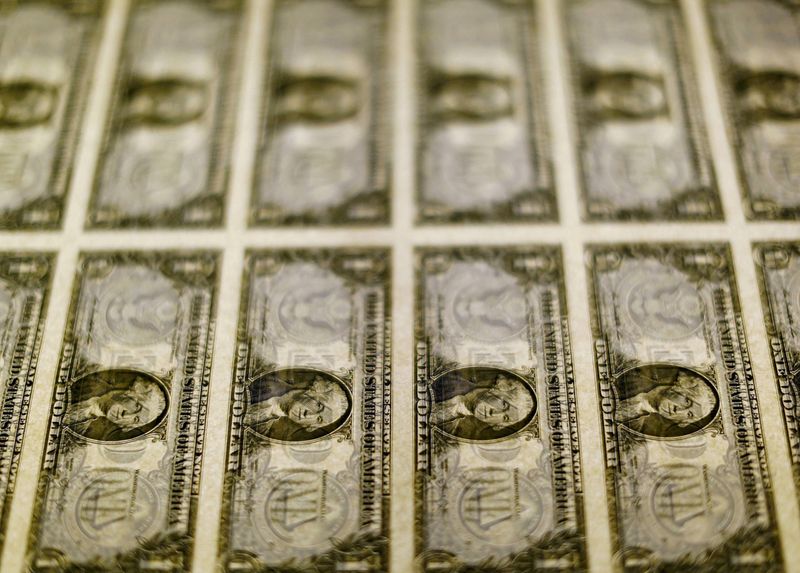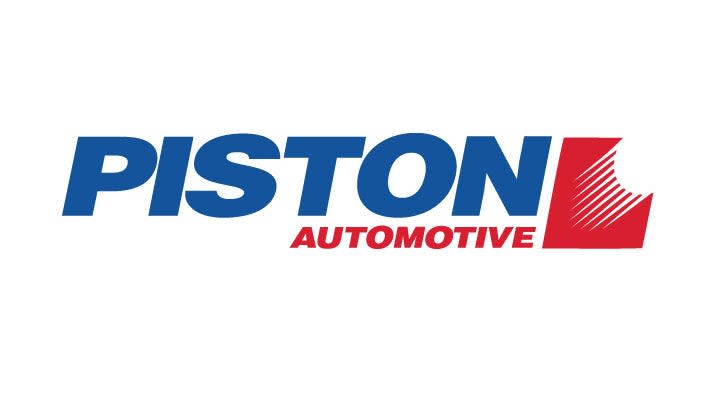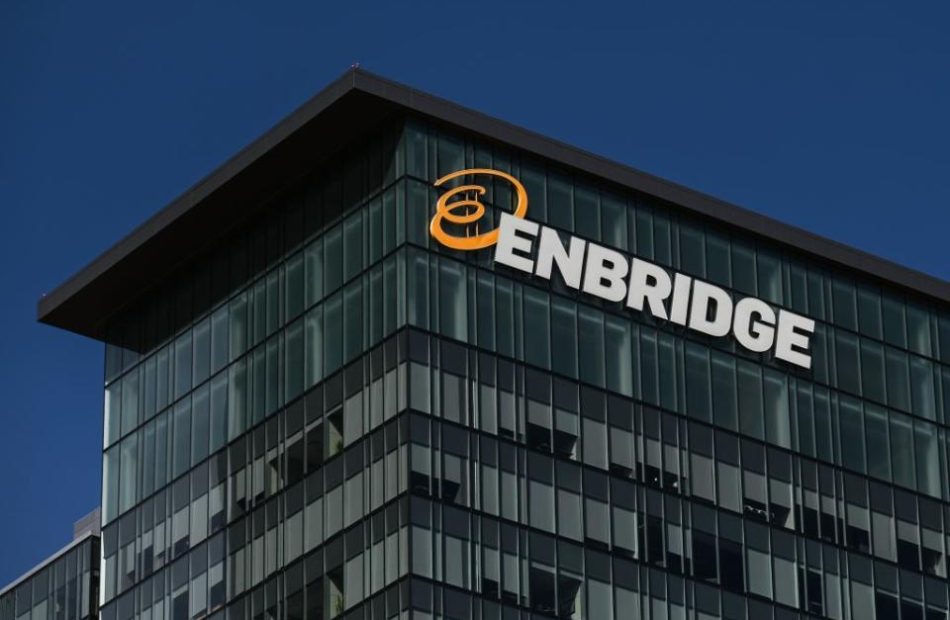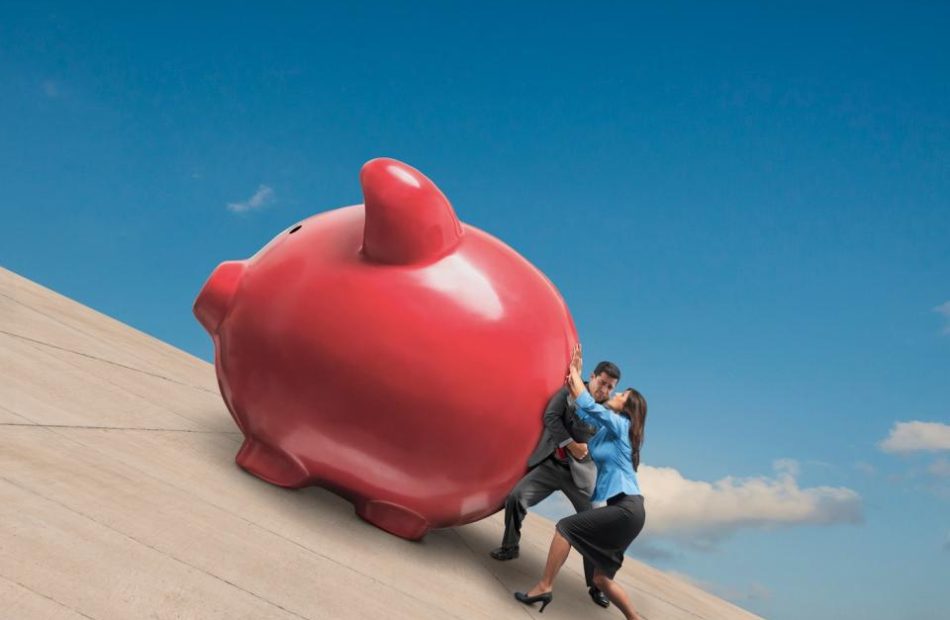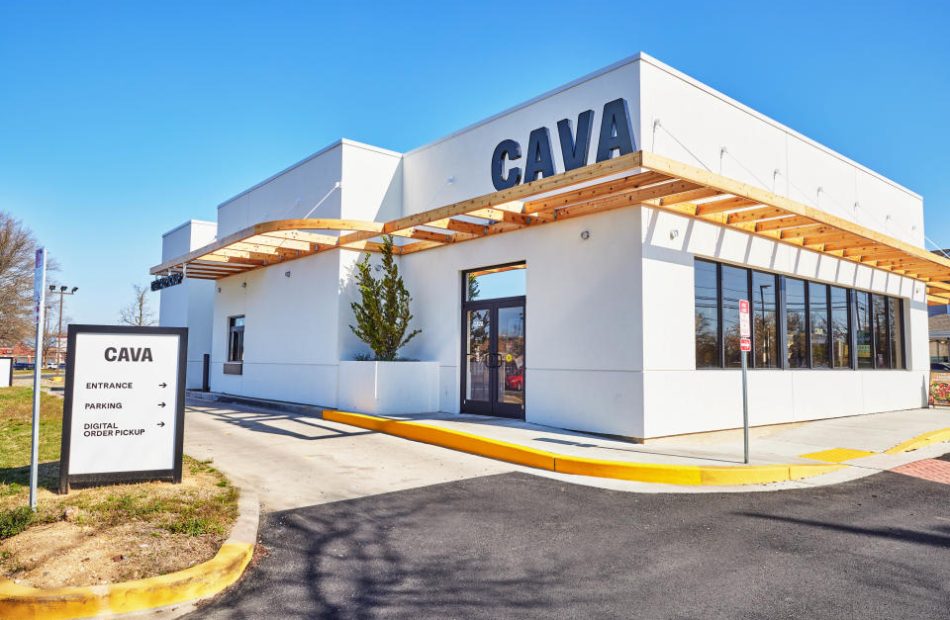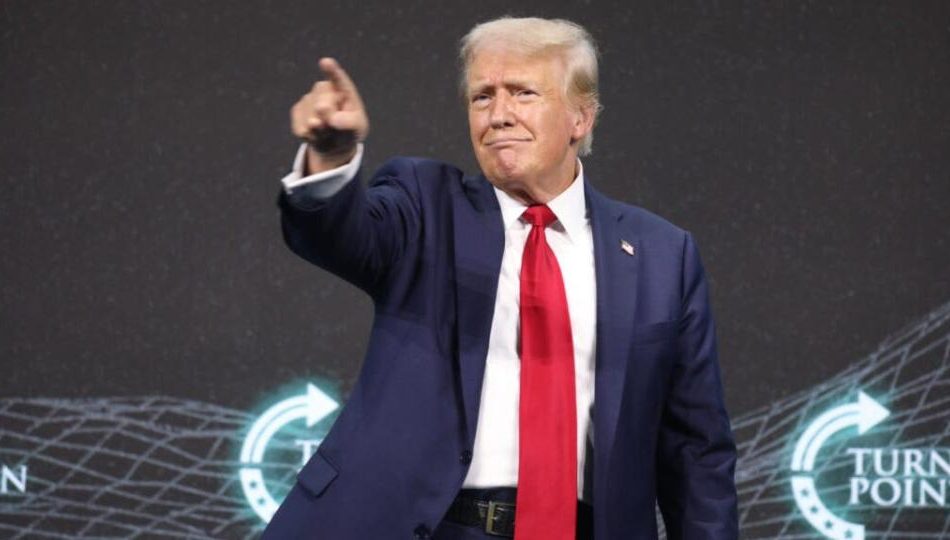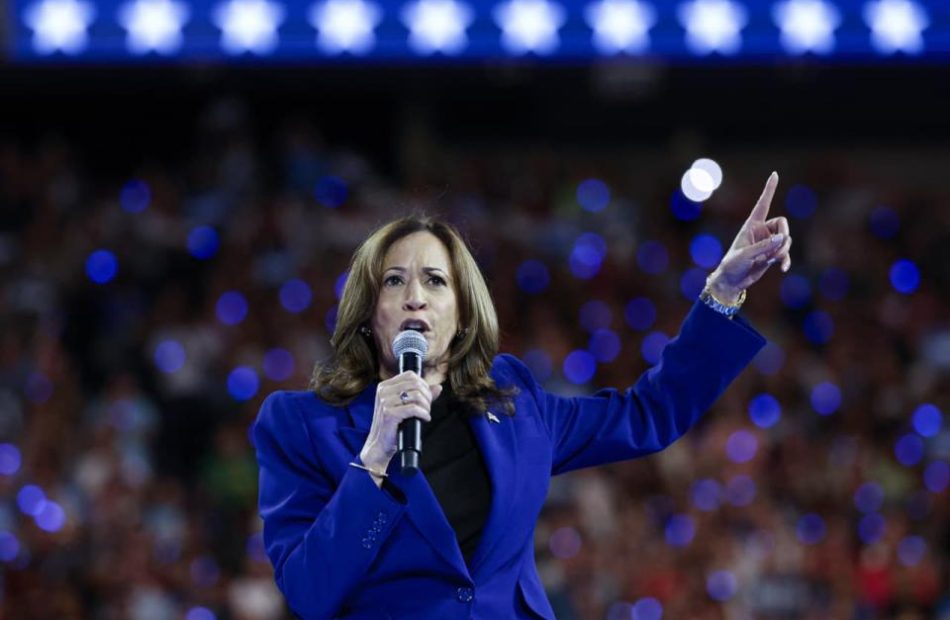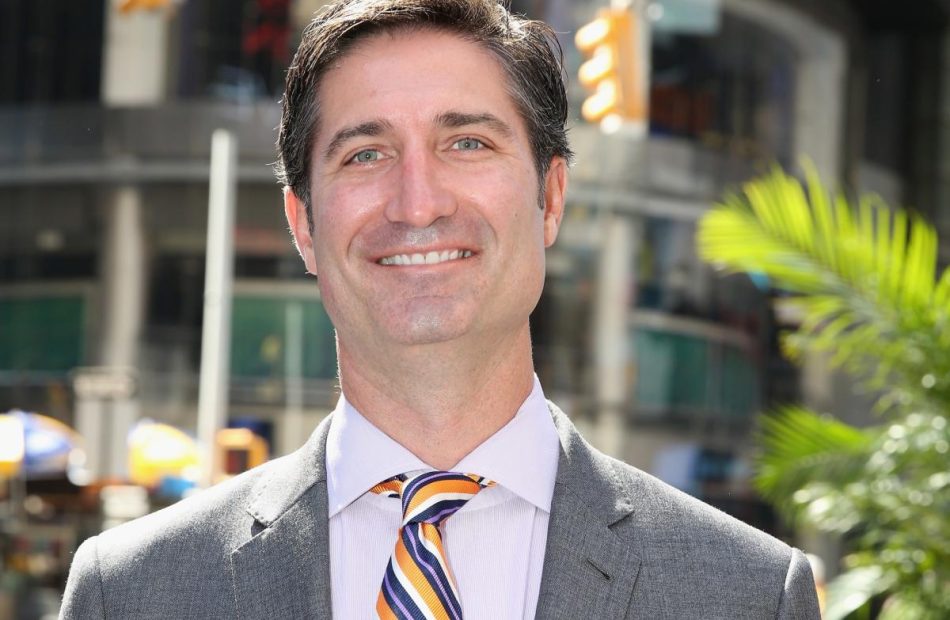Prediction: 1 Stock-Split AI Stock to Buy Before It Soars 100% in the Next Year (Hint: Not Nvidia)
Two artificial intelligence (AI) stocks have led the S&P 500 (SNPINDEX: ^GSPC) higher this year. Semiconductor company Nvidia (NASDAQ: NVDA) and server manufacturer Super Micro Computer (NASDAQ: SMCI) have see their share prices surge 159% and 119%, respectively.
Both companies recently announced 10-for-1 stock splits to make shares more affordable. Nvidia completed its split in June, and Super Micro Computer will follow suit in late September. But Wall Street analysts expect both stocks to move even higher over the next 12 months.
Nvidia’s median target of $140 per share implies 10% upside from its current share price of $127. And Super Micro’s median target of $693 per share implies 16% upside from its current share price of $600. But I think Super Micro stock will soar 100% in the next year, achieving a split-adjusted share price of $120 by August 2025.
That said, patient investors should consider buying both stocks.
Nvidia: Delayed Blackwell shipments create uncertainty ahead of earnings
Nvidia reported stellar financial results in the first quarter, crushing estimates on the top and bottom lines. Revenue rose 262% to $26 billion and non-GAAP net income climbed 461% to $6.12 per diluted share. CEO Jensen Huang said, “Our data center growth was fueled by strong and accelerating demand for generative AI training and inference on the Hopper platform.”
However, shipments of Nvidia’s Blackwell GPUs will be delayed three months due to a design flaw “discovered unusually late in the production process,” according to The Information. Blackwell chips can run training and inference workloads more quickly than the previous Hopper generation, which should further cement Nvidia’s leadership position in AI chips.
Following the report, Nvidia shares slipped to their lowest level since May, but the stock has since rebounded, suggesting the market sees little reason to worry. Indeed, Deutsche Bank analyst Ross Seymore doubts the delayed launch of Blackwell will have a material impact on the Nvidia’s near-term outlook or its ability to achieve Wall Street estimates.
However, investors should proceed cautiously. Management has yet to address the issue, so it represents an unknown that demands explanation when the company reports earnings on Aug. 28. Expectations are already high given that Nvidia has crushed Wall Street estimates in recent quarters, so bad news could cause the stock to decline sharply.
Looking ahead, Wall Street expects Nvidia’s earnings to grow at 37% annually over the next three year. That makes the current valuation of 75 times earnings look a little pricey, though not absurdly expensive. Patient investors can buy a very small position today, provided they are comfortable with the possibility of a post-earnings decline. In that scenario, investors should consider buying a slightly larger position on the pullback.
Super Micro Computer: The market leader in AI servers is expected to gain share
Super Micro Computer designs servers and storage solutions for cloud and private data centers. Internal manufacturing capabilities and a unique building-block approach to product development allow the company to rapidly build servers with the latest chips from suppliers like Nvidia. As a result, Super Micro typically beats competitors to market by two to six months, according to CEO Charlies Liang.
That advantage has made Super Micro the leader in artificial intelligence (AI) servers, and analysts expect the company to gain share quickly. Bank of America analysts expect Super Micro to account for 17% of AI server sales by 2026, up from 10% last year. Tom Blakely at KeyBanc is more bullish. He thinks Super Micro’s market share could top 20% this year. He also says the company has “competitive moats that should sustain if not expand this share in coming years.”
Supermicro reported mixed financial results in the fourth quarter of fiscal 2024 (ended June 30). Revenue surged 143% to $5.3 billion on record demand for AI infrastructure. However, gross margin contracted 5.8 percentage points to 11.2% and non-GAAP net income climbed just 78% to $6.25 per diluted share. Wall Street expected non-GAAP earnings to increase 130% to $8.14 per diluted share.
The stock plunged following the report, reflecting concerns that margins contracted because Super Micro lacks pricing power in an increasingly competitive market. But CEO Charles Liang attributed the margin crunch to costs associated with direct liquid cooling (DLC) components. Moreover, he expects gross margin to normalize between 14% and 17% by the end of fiscal 2025 (ends June 2025) as DLC servers begin shipping in higher volume.
Importantly, investments in DLC technology could reinforce Super Micro’s position as the market leader in AI servers. Liquid cooling is more cost effective than traditional air cooling, so demand for DLC servers is expected to grow rapidly in the coming years as data centers are filled with powerful AI hardware generating tremendous amounts of heat. Super Micro has positioned itself as an early leader in DLC technology.
Looking ahead, Super Micro’s guidance for fiscal 2025 implies revenue growth between 74% and 101%. If the company hits the high end of that range, its share price could increase 100% without any change in the price-to-sales ratio. And the stock currently trades at 2.5 times sales, which is a discount to the 12-month average of 3.3 times sales. That’s why I believe Super Micro stock will double by August 2025.
Should you invest $1,000 in Nvidia right now?
Before you buy stock in Nvidia, consider this:
The Motley Fool Stock Advisor analyst team just identified what they believe are the 10 best stocks for investors to buy now… and Nvidia wasn’t one of them. The 10 stocks that made the cut could produce monster returns in the coming years.
Consider when Nvidia made this list on April 15, 2005… if you invested $1,000 at the time of our recommendation, you’d have $787,394!*
Stock Advisor provides investors with an easy-to-follow blueprint for success, including guidance on building a portfolio, regular updates from analysts, and two new stock picks each month. The Stock Advisor service has more than quadrupled the return of S&P 500 since 2002*.
*Stock Advisor returns as of August 22, 2024
Trevor Jennewine has positions in Nvidia. The Motley Fool has positions in and recommends Nvidia. The Motley Fool has a disclosure policy.
Prediction: 1 Stock-Split AI Stock to Buy Before It Soars 100% in the Next Year (Hint: Not Nvidia) was originally published by The Motley Fool
U.S. Treasuries not the safe bet they once were, research says
By Ann Saphir and Howard Schneider
JACKSON HOLE, Wyoming (Reuters) -No safer than a bund. Or a gilt. Or an OAT.
Long touted as hands-down the world’s “safe haven” securities, the behavior of U.S. Treasuries during and after the COVID-19 pandemic calls that label into question, suggesting they are little different from the debt issued by the likes of Germany, Britain, France, or even big corporations.
That’s the key finding of new research presented at the Kansas City Fed’s annual research conference in Jackson Hole, Wyoming. It examines a shift in investor behavior in that period that raises questions about the “exorbitant privilege” the U.S. government has long enjoyed to borrow broadly on the global market even as federal budget gaps grow ever wider.
It’s a timely question given growing deficits are seen as a near certainty regardless of who becomes the next U.S. president.
New York University’s Roberto Gomez-Cram, London Business School’s Howard Kung and Stanford University’s Hanno Lustig also throw into question the assertion that the Treasury market was dysfunctional in that period – as asserted by the Federal Reserve when it launched its massive bond buying – or just rationally pricing the risk of a massive unfunded spending shock then being prepared in response to the health emergency.
“In response to COVID, U.S. Treasury investors seem to have shifted to the risky debt model when pricing Treasurys,” wrote New York University’s Roberto Gomez-Cram, London Business School’s Howard Kung and Stanford University’s Hanno Lustig in the paper. “Policymakers, including central banks, should internalize this shift when assessing whether bond markets are functioning properly.”
The researchers looked at the behavior of Treasuries securities during the pandemic shutdown of 2020, when yields shot higher not just for U.S. debt but for bonds issued by nations across the globe.
They found that investors did not, as they had during previous episodes of global financial stress, pile into Treasuries and drive up their value. Instead, investors marked down Treasury securities, much as they did for bonds from other countries.
Meanwhile the U.S. Federal Reserve responded to the spike in U.S. Treasury yields as if it were a result of market dislocation, they said, buying up bonds to bring back order to the world’s usually most liquid debt market as they had during the Global Financial Crisis.
“In the risky debt regime, valuations will respond to government spending shocks, which may involve large yield changes in bond markets,” the researchers said, noting that they found especially big market moves on days when fiscal stimulus was announced.
“In this environment, large-scale asset purchases by central banks in response to a large government spending increase have undesirable public finance implications,” they wrote. “These purchases, which provide temporary price support, destroy value for taxpayers but subsidize bondholders” and may also encourage governments to overestimate their true fiscal capacity, they wrote.
PUSHBACK
The paper drew pushback from the audience, including Treasury Department officials and others who said it needed to account for uncertainty unleashed around the pandemic, the fact that hundreds of billions of dollars of fiscal response to the crisis was financed without trouble, and that more recently U.S. bond yields had been dropping even with continued large deficit spending.
The paper did not reflect “the uncertainty in the episode,” U.S. Treasury Under Secretary for Domestic Finance Nellie Liang said in comments from the floor of the conference.
She noted that “with the passage of the Cares Act there is more than a trillion dollars of debt….and there is no sign of problems in that even during March or April” when global governments were first reacting to the health crisis.
(Reporting by Ann Saphir and Howard Schneider and Dan Burns; Editing by Chizu Nomiyama)
How NBA Bad Boy Vinnie Johnson Turned $5 Million In Career Earnings Into A $500 Million Fortune
Benzinga and Yahoo Finance LLC may earn commission or revenue on some items through the links below.
NBA fans under 40 may not recognize Vinnie Johnson, but he was an integral member of the great Detroit Pistons teams of the 1980s. Known as the “Bad Boys,” they won back-to-back championships, largely because of their notoriously physical play. Benzinga looks at how this high-scoring guard parlayed $5 million in career earnings into an estimated $500 million net worth in retirement.
Trending Now:
The Bad Boys
Younger fans of today’s NBA would probably not recognize the game if they watched a tape of an NBA basketball game from the late 1980s or early 1990s. Professional basketball was incredibly physical at that time, so much so that “noncontact sport” was a misnomer.
Although the early 1980s were dominated by luminaries like Magic Johnson and Larry Bird, who battled each other in several epic contests for the championship, the Detroit Pistons were steadily building a strong team. Led by future Hall of Famers Isiah Thomas and Joe Dumars, Detroit took physical play to a new extreme. They earned the nickname “Bad Boys” due to their shamelessly physical style of basketball.
By the late 1980s, the Pistons were bona fide contenders and Vinnie Johnson was an integral team member. He was known as “The Microwave” for his ability to instantly come in off the bench and get red-hot. Johnson’s opponents could not stop him from scoring 10 points in minutes while Thomas rested. It’s not a stretch to say that Detroit wouldn’t have won back-to-back titles without Vinnie.
Read More:
A Bad Boy Becomes a Mogul
Aside from the very physical play, there is another huge difference between today’s NBA and the era when Vinnie Johnson played: the money. Today, a player of Johnson’s talents could easily earn over $150 million during their career. By contrast, Vinnie Johnson made an estimated $5 million during his 13-year career. Yes, that was still a lot of money in the 1990s, but it still pales in comparison to player salaries today.
After retiring, Johnson wanted to do something that would provide income for himself and give back to his adopted hometown of Detroit, where he remains a legend. So, Vinnie started Piston Automotive in 1996. The company’s mission was to create jobs for Detroit residents and supply auto parts to the city’s “Big 3” automotive companies, Ford, General Motors and Chrysler.
Under Johnson’s leadership, Piston Automotive has grown to the point where it now supplies major Japanese automakers, including Nissan, Toyota and Honda. It has expanded its reach beyond Michigan and into the greater Midwest. Illinois, Kentucky, Ohio and Missouri are all covered by Piston Automotive’s footprint. The company has an estimated $2.8 billion in annual revenue and estimates put Johnson’s net worth in the $500 million range. The former bad boy has grown into a mogul.
Looking For Higher-Yield Opportunities?
The current high-interest-rate environment has created an incredible opportunity for income-seeking investors to earn massive yields, but not through dividend stocks… Certain private market real estate investments are giving retail investors the opportunity to capitalize on these high-yield opportunities and Benzinga has identified some of the most attractive options for you to consider.
For instance, the Ascent Income Fund from EquityMultiple targets stable income from senior commercial real estate debt positions and has a historical distribution yield of 12.1% backed by real assets. With payment priority and flexible liquidity options, the Ascent Income Fund is a cornerstone investment vehicle for income-focused investors. First-time investors with EquityMultiple can now invest in the Ascent Income Fund with a reduced minimum of just $5,000. Benzinga Readers: Earn a 1% return boost on your first EquityMultiple investment when you sign up here (accredited investors only).
Don’t miss out on this opportunity to take advantage of high-yield investments while rates are high. Check out Benzinga’s favorite high-yield offerings.
This article How NBA Bad Boy Vinnie Johnson Turned $5 Million In Career Earnings Into A $500 Million Fortune originally appeared on Benzinga.com
© 2024 Benzinga.com. Benzinga does not provide investment advice. All rights reserved.
3 Dividend Stocks to Double Up on Right Now
Dividends are a great source of passive income that can help to supplement your earned income. The good news is that it’s not tough to identify and purchase a basket of dividend stocks that can help you generate this income stream.
There are several characteristics that I look for when filtering out good dividend stocks for my portfolio. First, they must be a highly cash-generative business and possess a leading market position that ensures they can continue to churn out healthy and growing free cash flow. They also need to demonstrate a solid track record of paying out increasing dividends over the years.
The key to growing your dividend income is to steadily purchase shares of such companies and then compound your dividends by reinvesting them in the same companies. Over time, the increase in dividend per share, along with a higher stake in the business, will enable you to increase the amount of dividends you receive per year. The idea is to build up a stream of retirement passive income that you can comfortably rely on in your golden years. It is not a difficult process to understand, but it does take patience and perseverance.
Here are three dividend stocks that fit the bill and can allow you to slowly compound your wealth over the years.
1. Enbridge
Enbridge (NYSE: ENB) is a diversified energy delivery company with four core divisions: liquids pipelines, natural gas pipelines, gas utilities and storage, and renewable energy. The company is a major player in the energy sector and delivers around 30% of the crude oil produced in the U.S. and transports a fifth of the natural gas consumed there. This strong market position enables Enbridge to churn out steady cash flow as it occupies a dominant position in the energy delivery industry.
The business saw its revenue rise and then dip from 47.1 billion Canadian dollars in 2021 to CA$53.3 billion in 2022 and then to CA$43.6 billion in 2023. Net income was impacted over the years by one-off items, along with the impairment of goodwill and long-lived assets, but averaged around CA$5.9 billion over the three years. Enbridge’s free cash flow, however, was more consistent and increased from CA$1.2 billion in 2021 to CA$9.3 billion in 2023.
The company’s increasing free cash flow generation has enabled it to continuously raise its dividends over the years. Its latest quarterly dividend stood at CA$0.915 and topped off a 29-year streak of uninterrupted dividend increases at an annual rate of around 10%.
Enbridge has paid out dividends to its stockholders for more than 69 years, capping off an impressive track record for the energy delivery company. Enbridge should sustain this dividend growth with the recent acquisition of three gas utility businesses to bolster its business, for which federal approvals have already been obtained. Its Renewable Energy division is also executing the growth initiatives laid out during its Investor Day with several projects in the U.S. and Canada that have signed power purchase agreements with blue-chip companies such as Amazon and AT&T.
For the first half of 2024, Enbridge continued to churn out strong financial results with a distributable cash flow of CA$6.3 billion, up from CA$5.9 billion in the prior year. Management’s focus on low capital intensity and utility-like growth means that investors should continue to make Enbridge’s dividend continue growing in the years ahead.
2. Home Depot
Home Depot (NYSE: HD) is the world’s largest home improvement retailer, with 2,340 retail stores and more than 760 branches across 50 states in the U.S., 10 provinces in Canada, and Mexico. The company wields considerable clout in the retail sector and is a storied name that many rely on to find a wide variety of merchandise.
The company saw sales remain stable from 2021 to 2023, rising from $151.2 billion to $152.7 billion, while gross profit remained flat at around $50.8 billion to $51 billion because of inflationary pressures. Net profit declined slightly from $16.4 billion in 2021 to $15.1 billion in 2023, mainly due to higher interest expenses as interest rates surged over the past two years.
On a positive note, Home Depot’s free cash flow stayed consistently high and averaged $14.5 billion per year from 2021 to 2023. This consistency has allowed the retailer to increase its dividends every year since 2008, with the latest being $2.25 per quarter, up 7.7% year over year.
The company once again saw its earnings for the first half of 2024 weighed down by higher expenses, with net income falling by 4.3% year over year to $8.2 billion. Free cash flow continued to stay strong and came in at $9.3 billion, and is on track to surpass its 2023 level of $17.9 billion. With inflation declining in the past year, Home Depot should see the increase in expenses easing, which will decrease the pressure on its bottom line.
The business should also witness further growth, with Home Depot acquiring SRS Distribution, a residential specialty trade distribution company, back in March 2024 for around $18.25 billion. This should enable Home Depot to extend its offerings to better serve renovators and remodelers and will add $50 billion to the company’s total addressable market, increasing it to $1 trillion. Although the transaction will be financed mainly by debt and will cause earnings per share to decrease in the first year, management anticipates that the purchase will boost earnings from the second year onward.
Meanwhile, Home Depot opened four new distribution centers earlier this year to further extend its ecosystem to Detroit, southern Los Angeles, San Antonio, and Toronto. These new centers will improve accessibility for their customers who need to access large, bulky merchandise and increase the company’s attractiveness while cementing customer loyalty.
3. Nordson
Nordson (NASDAQ: NDSN) is a precision technology company that delivers applications to the consumer, medical, electronics, and industrial sectors. The business has an excellent track record of paying out increasing dividends and is one of the few Dividend Kings out there. Nordson recently upped its quarterly dividend by 15% year over year to $0.78 from $0.68, marking its 61st consecutive dividend increase and giving the company one of the longest-running unbroken streaks of increases.
The company has demonstrated steady improvements in both revenue and net income over the years. Sales went from $2.4 billion in 2021 to $2.6 billion in 2023, while net income rose from $454.4 million to $487.5 million over the same period. Free cash flow averaged $525 million per year from 2021 to 2023, and Nordson’s dividend payout ratio rose from just 22% to 31% over this period, which explains why the company could continue paying out more.
The first half of 2024 saw Nordson continue its streak of free cash flow generation with $273 million churned out. Net income for the half-year dipped by 1.7% year over year to $227.8 million despite a 1.8% year-over-year increase in revenue because finance expenses more than doubled.
Despite this, the company is paying out just 40% of its earnings as dividends if we use the latest annualized earnings per share of $7.90 and compare it with the annualized dividend per share of $3.12. This simple calculation shows that the business still has ample room to raise dividends and yet reinvest most of its earnings for growth.
Nordson is also growing its business through acquisitions, with its acquisition of ARAG closing in August last year and helping to expand the company’s reach into the high-growth precision agriculture sector. Back in May this year, Nordson acquired Atrion Corporation for around $800 million to expand its medical portfolio into new markets and therapies. The purchase is complementary to Nordson’s customer base and should contribute positively to its results in the future.
With these growth drivers in place, Nordson looks well positioned to continue growing its earnings, free cash flow, and dividends well into the future.
Should you invest $1,000 in Home Depot right now?
Before you buy stock in Home Depot, consider this:
The Motley Fool Stock Advisor analyst team just identified what they believe are the 10 best stocks for investors to buy now… and Home Depot wasn’t one of them. The 10 stocks that made the cut could produce monster returns in the coming years.
Consider when Nvidia made this list on April 15, 2005… if you invested $1,000 at the time of our recommendation, you’d have $758,227!*
Stock Advisor provides investors with an easy-to-follow blueprint for success, including guidance on building a portfolio, regular updates from analysts, and two new stock picks each month. The Stock Advisor service has more than quadrupled the return of S&P 500 since 2002*.
*Stock Advisor returns as of August 22, 2024
Royston Yang has no position in any of the stocks mentioned. The Motley Fool has positions in and recommends Enbridge and Home Depot. The Motley Fool has a disclosure policy.
3 Dividend Stocks to Double Up on Right Now was originally published by The Motley Fool
Cathie Wood Goes Bargain Hunting: 3 Stocks She Just Bought
Cathie Wood is struggling to get the balance right in her growth stock portfolios. The Ark Invest co-founder, CEO, and chief investment officer is losing to the market for the third time in the last four years. She’s trying not to keep it that way.
Wood offers up the daily transactions across her half-dozen exchange-traded funds. What’s she buying these days? Ark Invest added to existing positions in Ibotta (NYSE: IBTA), Roblox (NYSE: RBLX), and Guardant Health (NASDAQ: GH) on Thursday. Let’s take a closer look.
1. Ibotta
There’s no shortage of market debutantes this year that have faltered after the initial spark. Ibotta is the latest of the sinker stinkers. The digital marketing platform that rewards its growing user base for making purchases through its advertising partners went public at $88 in April, only to open at $117 on its first day of trading. It’s all been downhill from there. The stock has gone on to shed more than half of its opening high, closing below $50 on Thursday.
Ibotta became a broken initial public offering (IPO) at the end of May after disappointing the market with its first financial update as a public company. The first quarter itself was fine. Revenue rose 43%, shy of the 52% growth it posted for all of last year but still ahead of analyst expectations. Earnings also topped Wall Street profit targets. However, guidance called for a more substantial top-line slowdown for the second quarter. This is a hard sell for an IPO.
Ibotta has an intriguing business model. It offers a cash-back rewards program in which users of the free namesake app make money when they purchase — in person or online — from an Ibotta retail partner. Walmart (NYSE: WMT) is a partner as well as a minority shareholder in Ibotta.
As bad as the market reaction to the first report was, this month’s second-quarter announcement was even worse. Revenue growth slowed to 14%, or 29% adjusted for a prior-year breakage benefit. This is actually better than the adjusted 25% increase it was targeting three months earlier, but adjusted net income rose by a mere 9%.
Making matters worse, guidance for the current quarter calls for adjusted revenue growth to decelerate to 12%. It’s not a good trend. The stock plummeted 27% on its heaviest daily volume since the day it went public following the uninspiring report.
The platform is working. Ibotta has now reached more than 50 million accounts and has paid back more than $2 billion in rebates since its inception. One can argue that it may even be a recession-resilient play. If consumers are pinched, they’re going to want to save money whenever they can. For retail partners, it’s a great way to generate a lead and only have to pay when a sale is made.
Wood bought some Ibotta when it went public in April. She’s been busy this week, adding to her early position at much lower price points in the last three trading days. She’s not the only one who thinks the stock is cheap. Ibotta’s board announced a $100 share buyback on Thursday. At current prices, this would be enough to repurchase most of the 2.5 million freshly minted shares from the IPO at almost half the price.
2. Roblox
Roblox stock is moving higher for the third consecutive month, but it’s still trading lower in 2024. The online gaming platform developer saw its revenue increase 31% for the second quarter it posted earlier this month. The 31% increase in revenue is the second-strongest gain it has posted in the last two years. Red ink continues to be a problem, but its loss narrowed. It was a beat on both ends of the income statement.
Roblox also boosted its full-year revenue and bookings guidance. The platform’s 79.5 million average daily active users has risen 21% over the past year. Average monthly unique payers and time spent on the platform are growing even faster, encouraging signs of monetization and engagement, respectively.
3. Guardant Health
The one Wood purchase on this list that’s actually trading higher this year is Guardant Health, but its 3% gain in 2023 is still well short of the market averages. Revenue rose 29% for the developer of oncological tests in the financial update announced earlier this month. Guardant also boosted its full-year revenue outlook.
Guardant is still years away from reported profitability, but it has a compelling pipeline of clinical or biopharmaceutical tests. Its own forecast calls for revenue to triple by 2028. A lot will have to go right for that to happen, but Wood doesn’t mind waiting for growth projections to play out and pay off.
Should you invest $1,000 in Ibotta right now?
Before you buy stock in Ibotta, consider this:
The Motley Fool Stock Advisor analyst team just identified what they believe are the 10 best stocks for investors to buy now… and Ibotta wasn’t one of them. The 10 stocks that made the cut could produce monster returns in the coming years.
Consider when Nvidia made this list on April 15, 2005… if you invested $1,000 at the time of our recommendation, you’d have $758,227!*
Stock Advisor provides investors with an easy-to-follow blueprint for success, including guidance on building a portfolio, regular updates from analysts, and two new stock picks each month. The Stock Advisor service has more than quadrupled the return of S&P 500 since 2002*.
*Stock Advisor returns as of August 22, 2024
Rick Munarriz has no position in any of the stocks mentioned. The Motley Fool has positions in and recommends Guardant Health, Roblox, and Walmart. The Motley Fool has a disclosure policy.
Cathie Wood Goes Bargain Hunting: 3 Stocks She Just Bought was originally published by The Motley Fool
Cava reports juicy earnings as steak launch, sales growth pushes stock to all-time high
Cava (CAVA) is serving up some savory numbers for its investors, leading the stock to new highs.
After the market close on Thursday, the Mediterranean fast-casual chain reported second quarter results that beat estimates across revenue, earnings, and same-store sales.
Net sales jumped 35.2% year over year to $233.5 million, compared with expectations of $219 million. Adjusted earnings per share came in at $0.17, versus the $0.13 expected.
Same-store sales jumped 14.4%, more than the 7.45% Wall Street expected. Sales growth was driven by higher foot traffic (up 9.5% year over year), an increase in menu price, new locations, and the launch of grilled steak on June 3.
On Wednesday, Cava stock hit a record-high close of $102.39, and on Friday, it hit an intraday high of $122.95, making its biggest intraday jump ever.
The steak launch surpassed its expectations by a landslide, CEO Brett Schulman told Yahoo Finance the team is “working on a deep pipeline of innovation” for the next few years. Schulman said the company’s “value proposition” is drawing diners as consumers trade down from fine-dining restaurants but trade up from fast food.
The company raised its full year outlook to sales growth of 8.5% to 9.5% as a “reflection of the strength we continue to see in the business,” he told Yahoo Finance, adding that he expects to hold onto momentum in Q3 and Q4.
“It implies low double digit comps [comparable same-store sales growth] for the remainder of the year,” he said.
Shares are up 180% year to date, compared to 20% for Chipotle (CMG) and 18% for the S&P 500 (^GSPC).
Slow and steady is Cava’s go-to approach to expansion. By 2032, the company plans to have 1,000 Cava locations.
Citi analyst Jon Tower said there’s still room left for growth in a note to clients. “A unit growth opportunity that continues to re-set higher, discrete same-store sales, price, and margin opportunities as the system densifies and margin tailwinds as the footprint shifts towards lower cost markets.”
In Q2, Cava opened 18 new locations, bringing the total to 341.
TD Cowen analyst Andrew Charles is bullish on Cava’s 2032 goal, citing its wide appeal. He expects 50% of next year’s new locations to have digital pick up lanes. There are currently 45 as of now.
Stifel analyst Chris O’Cull, who has a buy rating on Cava, projects long-term revenue growth in the 17-20% range, boosted by 15% unit growth and low to mid-single digit same store sales growth.
Schulman said within existing markets, there is still runway to build more brand awareness. Other future growth drivers include the relaunch of its loyalty program in October and catering.
The company aims to market test catering in major metros in 2025 and launch it on a national scale in 2026.
It currently has 10 digital kitchen hubs and 10 hybrid kitchen hubs in various locations, as well as regular Cava locations that are testing catering.
Cava’s also experimenting with AI technology in the kitchen to increase throughput and detect when food is low. Unlike its competition, humans will walk consumers through the line to build bowls.
“Our mission is to bring heart health and humanity to food and if we lost that humanity piece, I don’t think we’d be living up to our mission,” Schulman told Yahoo Finance.
The company continues to perform at a time when fast-casual dining seems to be bucking a broader slowdown across the food industry as consumers double down on value.
“Cava was one of just a handful of publicly traded restaurant brands with positive traffic growth in the second quarter,” Schulman said on the earnings call.
He added that from 2019 to 2023, the company raised prices 12%, less than fast food price increases and grocery price increases overall, per CPI data.
“For a dollar or two more… you can get a bowl of fresh Mediterranean food at Cava versus a traditional fast food, freezer to fryer meal. We’re see seeing people trade over and trade up to us,” he told Yahoo Finance.
Chipotle blew past expectations in its report after same-store sales jumped 11.1% year over year, versus the 9.23% Wall Street anticipated. Shake Shack (SHAK) saw same-store sales climb 4%, beating estimates of 3.2%.
Sweetgreen (SG) reported its best same-store sales growth in two years, up 9%, driven by higher foot traffic and prices.
Its CEO, Jonathan Neman, told Yahoo Finance that “we’re going to be very judicious in how we use it [pricing power].” Neman claimed the chain took fewer price hikes than its rivals since the pandemic.
“As you look at the relative pricing difference between Sweetgreen, some of our fast-casual competitors and then QSR, the gap has really narrowed. QSR, you can’t get in and out of there for under $15 today,” he told Yahoo Finance.
Here’s what Cava reported, compared with Wall Street estimates, per Bloomberg consensus data:
-
Revenue: $233.5 million versus $219.5 million
-
Adjusted earnings per share: $0.17 versus $0.13
-
Same-store sales growth: 14.4% versus 7.45%
The company raised its fiscal 2024 outlook for restaurant openings, sales growth, and restaurant-level profit margin.
It now expects sales growth of 8.5% to 9.5%, up from 4.5% to 6.5% in Q1 and its previous guidance of 3% to 5%.
The total number of new restaurants will now be between 54 and 57, up from 50 to 54. The restaurant-level profit margin is expected to be between 24.2% and 24.7%, up from 23.7% to 24.3%.
—
Brooke DiPalma is a senior reporter for Yahoo Finance. Follow her on X at @BrookeDiPalma or email her at bdipalma@yahoofinance.com.
Frugal Wife Won't Loosen The Reins On Husband's $100 A Month Personal Spending Budget, Ramsey Show Hosts Say There Might Be Deeper Issues
In a recent episode of “The Ramsey Show,” hosts Jade Warshaw and George Kamel tackled a financial dilemma faced by listener Jack from Boise, Idaho. Jack, 60, and his wife have a net worth of $6.5 million. Five million is in paid-off, income-producing real estate, bringing in about $200,000 annually. Plus, they both work a little here and there. Jack is frustrated by his wife’s reluctance to spend more on personal and fun items, currently at $100 a month despite their wealth.
Don’t Miss:
Jack explained that they each had a $50-a-month budget while paying off their debts, and his wife reluctantly increased his spending to $100 a month. But even so, she sees that as excessive and isn’t comfortable increasing their spending any further.
Warshaw and Kamel couldn’t help but express their disbelief at the tight budget. Kamel quipped, “Your budget’s got skinny jeans on it, man!” Warshaw agreed and asked, “Why are you not loosening these purse strings?”
See Also: The number of ‘401(k)’ Millionaires is up 43% from last year — Here are three ways to join the club.
But, as the call played out, it became clear that this may be deeper than money. Warshaw pointed out, “At the end of the day, this is about your guys’ interests and being able to value each other’s interests.” She stated that both partners should feel rewarded for their hard work in paying off debts and having a good financial situation. The couple currently enjoys traveling together, which Jack’s wife finds value in, but Jack also enjoys day-to-day pleasures like going to lunch with friends and getting a coffee now and then, which is difficult to do on a slim budget.
Kamel suggests that there could be deeper psychological issues for Jack’s wife, like fear of scarcity or financial insecurity, possibly even rooted in her upbringing. He recommended that the couple consider counseling to address any underlying issues that may be causing her concerns surrounding their finances, stating, “there’s some trauma there” that needs to be explored.
Trending: Founder of Personal Capital and ex-CEO of PayPal re-engineers traditional banking with this new high-yield account — start saving better today.
The conversation touched on balancing a budget between saving, giving, and spending. Jack said that they give over 20% of their income, which he had to convince his wife to do. But she still struggles with spending less than 1% of their income on personal spending.
Kamel and Warshaw suggested that Jack sit down with his wife and have a trial period where they set aside a certain percentage of their annual income for personal spending. That will help demonstrate to her that they’ll be OK even if they spend $500 a month on personal spending, which would be 3% of their annual income.
Trending: Can you guess how many retire with a $5,000,000 nest egg? – How does it compare to the average?
The Bureau of Labor Statistics said that the typical American family spends about 4.7% of their income on entertainment expenses. The average annual income in Boise, Idaho, where Jack lives, is $109,008, about half what they bring home from real estate income.
The Ramsey Show hosts conclude that for Jack and his wife, the issue isn’t just about money – it’s about communication, mutual understanding, and addressing deeper fears that may be driving their financial decisions. With open dialogue and maybe even seeking professional help, they can find better ways to enjoy their wealth without compromising their relationship.
For couples facing similar challenges, consulting a financial advisor can help you better understand your financial situation so you can make the best decisions about how to spend, save, and give according to your unique financial goals.
Read Next:
“ACTIVE INVESTORS’ SECRET WEAPON” Supercharge Your Stock Market Game with the #1 “news & everything else” trading tool: Benzinga Pro – Click here to start Your 14-Day Trial Now!
Get the latest stock analysis from Benzinga?
This article Frugal Wife Won’t Loosen The Reins On Husband’s $100 A Month Personal Spending Budget, Ramsey Show Hosts Say There Might Be Deeper Issues originally appeared on Benzinga.com
© 2024 Benzinga.com. Benzinga does not provide investment advice. All rights reserved.
Trump's Latest Health Care Attack on Kamala Harris: What It Could Mean for Your Premiums and Taxes
Former President Donald Trump recently sparked a debate on health care during a press conference at his Bedminster golf club. He targeted Vice President Kamala Harris over her support for Medicare for All. While Harris no longer supports a single-payer health care system, Trump’s words have many concerned about what her presidency could mean for Americans’ health care premiums and taxes.
Don’t Miss:
During the press conference, Trump accused Harris of wanting to “abolish very popular private health insurance,” which he claims would force 150 million Americans into “inferior socialist government-run health care systems.” Trump further warned of “massive tax increases” and “rationing and deadly wait times” under such a system. He argued that the U.S. has “the best health care in the world” and that Harris’s policies would destroy this system, leading to what he described as a “communist” approach where “everybody gets health care.”
See Also: Can you guess how many retire with a $5,000,000 nest egg? – How does it compare to the average?
While Trump’s statements were alarming, they were not entirely accurate. Harris has previously supported Medicare for All, which aimed to replace private insurance with a universal system. However, she has since distanced herself from this plan. A spokesperson for Harris recently clarified, “The Vice President will not push single-payer as president.” Instead, Harris now supports building on the Affordable Care Act (ACA), which allows for a combination of private and public health care options.
The clash between Trump and Harris on health care highlights a broader debate that could impact your wallet. If Harris did revert to supporting Medicare for All as Trump suggests, that could lead to higher taxes but lower overall health care costs. However, that is not currently where the Democratic candidate’s policies stand.
As it stands, Harris has emphasized her support of President Joe Biden’s initiatives to strengthen the Affordable Care Act and lower prescription drug costs. Among Harris’s plans for health care, four key areas stand out:
-
Lower prescription drug costs: Harris passed the Inflation Reduction Act in 2022, which will allow the negotiation of prescription drug prices. When these prices go into effect in 2026, Americans will save an estimated $1.5 billion.
-
Pharmacy benefit managers (PBMs): Harris has stated that she’ll start “by cracking down on pharmaceutical companies who block competition and abusive practices by pharmaceutical middlemen who squeeze small pharmacies’ profits and raise costs for consumers.”
-
Medical debt: The Harris administration plans to work with states to cancel and create policies to help prevent future medical debts.
-
Affordable Care Act (ACA): Subsidies on health care premiums are set to expire in 2025. Harris wants to expand the ACA premium tax credits so they don’t expire.
Trending: Founder of Personal Capital and ex-CEO of PayPal re-engineers traditional banking with this new high-yield account — start saving better today.
The U.S. health care system is imperfect and will likely face ongoing reforms regardless of who takes office. Americans often pay much more for health care than people in other high-income countries. The ACA has made strides to expand coverage and reduce costs, but many Americans are still uninsured or underinsured due to expensive premiums.
As the 2024 election draws nearer, health care will be among the top issues for all parties. It’s up to Americans to take the time to understand what each party’s health care proposals will mean for them.
Read Next:
“ACTIVE INVESTORS’ SECRET WEAPON” Supercharge Your Stock Market Game with the #1 “news & everything else” trading tool: Benzinga Pro – Click here to start Your 14-Day Trial Now!
Get the latest stock analysis from Benzinga?
This article Trump’s Latest Health Care Attack on Kamala Harris: What It Could Mean for Your Premiums and Taxes originally appeared on Benzinga.com
© 2024 Benzinga.com. Benzinga does not provide investment advice. All rights reserved.
Kamala Harris’s critics are totally wrong about taxing unrealized gains
I’m trying to work out if I’ve ever heard as much nonsense in such a short period of time as I’m hearing right now about the Biden-Harris plan to tax unrealized capital gains.
Under the plan, an increase in the value of an asset would be taxed as income, even if the owner hasn’t sold the asset. Right now, these so-called paper profits aren’t taxed.
Most Read from MarketWatch
Never mind that this proposal is nothing new — and is nowhere near getting passed into law anytime soon, anyway.
Or that it would only apply to the tiny number of people who have a net worth of over $100 million.
Or that it would be created to fix a very specific problem, which is that many of the superrich actually pay almost no income tax at all.
Even when I put all that to one side, almost every single thing I’m hearing against the proposal is wrong and an insult to our intelligence.
I’m not even especially liberal. I’m a registered independent, an investor and a capitalist. But these arguments are so bad they make me want to hoist the hammer and sickle and start singing the “Internationale.” Low-tax conservatives and Republicans should be cringing in embarrassment.
First, let’s start with all the arguments being made against this policy that are just arguments against taxes in general — for example, that if we tax unrealized gains, it will mean people are being penalized for owning assets, or for saving money.
By that measure, I’m being penalized for working for a living, because I have to pay income tax. I’m also penalized for owning a home, because it is subject to property tax. I’m penalized for inheriting money if I have to pay inheritance tax. I’m penalized for shopping when I pay my state’s sales tax.
What’s left? Er … nothing.
Look, I get it. These people don’t like paying taxes. Nobody does. But government money has to come from somewhere. If I want to live in an untaxed anarchy with no government, I can probably move to one of the world’s failed states and take my chances.
These people are no different from left-wing extremists who also want something for nothing. They deserve each other.
Then there are the complaints that taxing unrealized gains is somehow unfair because the investment hasn’t been sold yet, or because it would be too logistically difficult to tax it before a sale.
Phooey.
Why should I have to sell something before it’s taxable? My city taxes my home on its assessed value every year. It feels no obligation to wait till I sell it.
My mutual funds and exchange-traded funds charge me a fee based on the total value of my investment. They don’t just bill me for the funds I’ve sold. I pay a percentage of the total value, including all the unrealized gains.
If you have a financial adviser or portfolio manager, they will do the same thing.
They will not charge you a fee based on realized gains. They will charge you a fee based on total assets.
Amazing, really, given that such a calculation is alleged to be totally impossible.
I have never heard anyone arguing this is unfair or a wrong way to do business.
Once upon a time, taxing unrealized capital gains probably would have been logistically impossible. Imagine all the paperwork involved, back in the days before computers.
No longer.
I’ll bet your broker tracks your total portfolio value by day, hour and minute, even if you are just a regular customer with an online account. Doing the math on this stuff now is easy.
My favorite complaint about taxing paper gains comes from those in the hedge-fund and private-equity rackets whose businesses would be most affected. These are people who make their gazillions by charging their clients hefty fees … on their total assets under management.
No, not just the realized gains, but also all the unrealized gains.
The typical manager charges clients about 2% a year on the value of their investments, just for breathing, plus 20% of the profits (if any). It’s known — widely — as the 2-and-20 model.
Neither of these ludicrous fees is levied only on realized assets. Hand $1 million to a hedge fund or private-equity fund and they start charging 2%, or $20,000, a year from Day 1 — often before they get around to investing your money.
And if your portfolio somehow goes up, say, by 50%, they’ll skim another 20% of that — $100,000 — in extra fees. No, they won’t wait till any of those gains are realized, or “crystallized,” or whatever term they use. You’ll be paying those fees quarterly, if not monthly, as the supposed performance occurs.
If the investments then tank, even before you’ve realized a nickel of personal gains, do you think they’ll give that money back? How big a sucker are you?
And these are the same people pretending to be shocked — shocked! — by the very idea of levying a charge based on asset value or unrealized gains: “What kind of Soviet tyranny is this?”
Pass the hankies.
It’s not as if these guys have any grounds to complain about the tax code. They already get a full-service massage from the IRS every year.
Hedge-fund and private-equity managers benefit from the so-called carried-interest loophole, which might better be described as the two-Ferrari tax break.
This is a special tax break, just for them, that’s so outrageous that nonexperts simply refuse to believe it when you tell them about it.
It means they pay taxes at special low rates. And they get to defer their tax bills for years.
Try doing that at home.
It’s not even as if they are creating value. As Warren Buffett has pointed out, these funds, over time, generate worse returns for their investors than low-cost index funds.
Personally, I think we should levy a special tax on all hedge-fund and private-equity managers. How about 2% of their personal assets per year, plus 20% of your gains — realized and unrealized?
Outrageous? Larcenous? Grotesque? Sure. We learned from the best.
Most Read from MarketWatch
A week ago, Starbucks’ new CEO was a ‘messiah’…and then everyone found out about his 1,000-mile private-jet supercommute
A week ago, Starbucks’ (SBUX) new CEO, Brian Niccol, was described as the “messiah” that the ailing coffee giant was looking for.
The mere announcement that the former CEO of Chipotle had a new job drove Starbucks stock up 25%—the greatest surge in value in the company’s history.
Niccol, who has a track record of success in turning around companies that have hit a rough patch, including Taco Bell and, most recently, Chipotle, is due to start at Starbucks on Sept. 9.
So far, so good.
But in the last few days the good news has been overshadowed by a public backlash over perks in his contract that allow him to work remotely from his home in Newport Beach, Calif., and commute to the company’s HQ in Seattle via private jet.
In Starbucks’ offer letter to Niccol, the company said: “During your employment with the company, you will not be required to relocate to the company’s headquarters… You agree to commute from your residence to the company’s headquarters (and engage in other business travel) as is required to perform your duties and responsibilities.”
The document also states that he will be eligible to use the company’s aircraft for “business related travel” and for “travel between [his] city of residence and the company’s headquarters.”
A Starbucks spokesperson clarified to CNBC that its new chief will still be expected to work from Starbucks’ Seattle office at least three days a week, in line with the company’s hybrid work policies.
Yet, instead of extinguishing the fire, the announcements only stoked the flames. By Thursday, the New York Times weighed in with a sarcastic headline. The BBC even produced a map of his commute.
Niccol’s commute had taken on a media life of its own.
‘What a bunch of performative hypocrites’
Some consumers have (wrongly) drawn the conclusion that as Niccol isn’t required to relocate to Seattle, he will be using the company jet on a daily basis to get to work.
Although the company denied to the BBC that Niccol will be expected to fly back and forth over 1,000 miles each day, the public has gone into overdrive, blasting his “hypocritical” commute given the company’s recent sustainability commitments. According to a 2021 report by the European Federation for Transport and Environment, private jets are up to 14 times more polluting, per passenger, than commercial planes and 50 times more polluting than trains.
“Starbucks CEO has decided to travel on a private jet for work instead of relocating. Meanwhile, we are supposed to save the environment and have our coffee with a paper straw that gets soggy in minutes,” one social media user wrote on X.
Another user joked: “Looks like we’ll have to use a lot more of reusable cups and paper straws to ‘offset’ the new Starbucks CEO’s humongous carbon footprint.”
“What a bunch of performative hypocrites with their enviro friendly branding. No company who truly cares about the climate would agree to this,” chimed a third.
“If this man is commuting regularly on a private jet, do not let @Starbucks convince you they are environmentally conscious,” another wrote. “They get on us commoners about our cars but things like private jets and yachts do way more damage to the environment per unit.”
Starbucks declined to comment on accusations that it is being hypocritical by pushing its customers to use paper straws while its CEO has access to the company jet.
“Niccol has proven himself to be one of the most effective leaders in our industry, generating significant financial returns over many years,” a spokesperson for the company told Fortune. “We’re confident in his experience and ability to serve as the leader of our global business and brand, delivering long-term, enduring value for our partners, customers and shareholders.”
The public will forget Starbucks’ hypocrisy—its workers won’t
Ben Alalouff, chief strategy officer at the marketing agency Live & Breathe, thinks that while the public backlash will blow in a matter of days, Starbucks workers won’t forget the news so quickly.
“If I was a Starbucks employee at corporate and I heard that a huge amount of costs every month is being used [to fuel a private jet] rather than investing into the workforce or investing into benefits or bonuses or whatever it may be, I’d be pretty pissed off,” he told Fortune.
As well as the anger directed at Starbucks from environmentally conscious consumers, others on social media have been quick to highlight the inconsistency with Starbucks’ decision to require office workers to return to the office at least three days a week.
Unlike Niccol, those who live far from the office (on a fraction of their boss’ salary) will have had to choose between relocating to meet the company’s in-office requirements or finding alternative work.
It’s probably a nine-day wonder
In the long run, however, Alalouff thinks the Starbucks brand will be fine.
“I think it is too large of a brand and it’s too much of a small issue in the plethora of things that are wrong with the world,” Alalouff tells Fortune. “No one’s going to change their coffee habits long-term based on the fact that the CEO is on a jet three days a week.”
“It’ll be this week’s interesting, ridiculous behaviour by an executive… But I think the worry would be internally,” he adds.
“I totally understand stretching and accommodating talent that’s going to be transformative to your business. But I think this one probably goes a tad too far.”
Niccol’s arrangements are pretty common. As few as 7% of CEOs are back in the office full-time (despite a quarter of them believing that a return to the office full-time is a priority).
Unsurprisingly, the double standard isn’t going unnoticed by employees who are often responding to rigid RTO mandates with resignation letters—or sticking around but putting in minimal effort and finding ways to flout the rules.
In Alalouff’s eyes, Starbucks will have to spend the next six months making the company “look rosy” to get buy-in from both its employees and customers.
“The longer this new CEO goes without making a huge impact that’s noticeable internally as well as externally, the worse this decision will look,” he concludes.
This story was originally featured on Fortune.com

